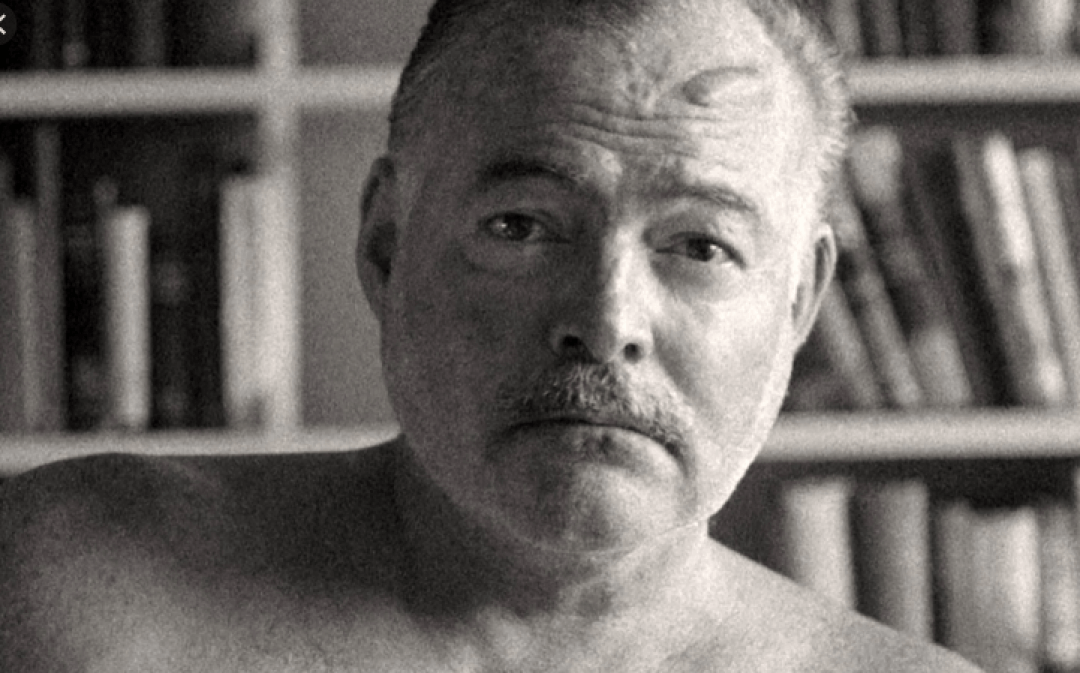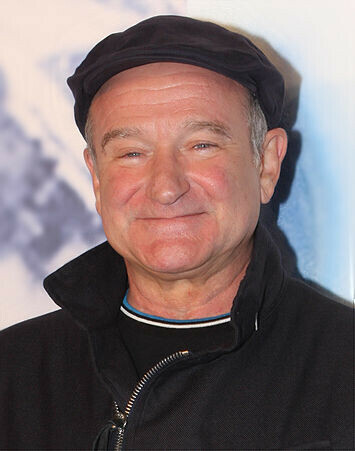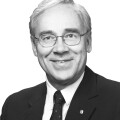The psychiatric drug-induced suicides of Ernest Hemingway and Robin Williams

The perils of being a drugged-up insomniac celebrity in mainstream psychiatric care
Sixty years ago (July 2, 1961) an American literary icon, Ernest Hemingway, committed suicide at his beloved vacation retreat in Ketchum, Idaho. He had just flown to Ketchum after being discharged from a psychiatric ward at the Mayo Clinic in Rochester, Minn., where he had received a series of electroconvulsive “treatments” (ECT) for his life-long intermittent depression that had started after he had experienced the horrors of World War I.
In the “War To End All Wars” he had been a non-combatant International Red Cross ambulance driver and stretcher-bearer.
One of Hemingway’s wartime duties was to retrieve the mutilated bodies of living and dead humans and the body parts of the dead ones from the Italian sector of the WWI battle zone.
In more modern times his MOS (military occupational specialty) might have been called Grave’s Registration, a job that – in the Vietnam War – had one of the highest incidences of posttraumatic stress disorder (PTSD) that arose in that illegal war’s aftermath.
Hemingway, just like many of the victims of every war (both soldiers and civilians) with recurrent nightmares, was haunted for the rest of his life by the horrific images of the wounded and dead, so there was no question that he had what was later to be understood as combat-induced PTSD with depression, anxiety, panic attacks, alcoholism, insomnia, nightmares, auditory and/or visual hallucinations and suicidality.
Unfortunately for “Papa,” the psychiatrists at the Mayo Clinic acted as if they were unaware of the reality of the PTSD phenomenon. They mistakenly thought that he had a mental illness of unknown cause. (In Mayo’s defense, the diagnosis of PTSD wasn’t validated by the American Psychiatric Association as a Diagnostic and Statistical Manual (DSM) diagnosis until 1980.)
Hemingway, who consumed large volumes of hard liquor daily, had also been wounded by shrapnel in Italy during WWI so he also had physical pain issues and suffered psychologically during his recovery.
Therefore, like many other soldier-victims of combat-induced PTSD he used alcohol to self-medicate his physical and psychic pain, as well as his later recurrent episodes of insomnia, nightmares, failed marriages and the financial stresses related to the alimony payments to his ex-wives.
Following his Mayo Clinic misadventure, Hemingway rapidly came to understand that his latest brain electroshock “treatments” had erased his memory and creativity, and, be-cause those realities were essential for him to continue his writing career – and, feeling that he no longer had a reason for living – blew his brains out with one of his hunting weapons at his beloved retreat in Montana.
There is no record of what psychia-tric drugs he had been prescribed, but ECT is never attempted until all psychiatric drug options had failed, even back in the 1950s when Big Pharma hadn’t yet come up with the thousands of “types” of psych drugs that are now commonly prescribed.
The parallel paths of artistic geniuses like Hemingway and Robin Williams (and Michael Jackson and Prince)
53 years after Hemingway’s self-inflict-ed, iatrogenic death, brilliant comedian and actor Robin Williams, another American icon, entered the Hazelden addiction treatment center – also in my home state of Minnesota.
He was treated in-hospital with a cocktail of (undisclosed) psychiatric drugs for a month and, shortly after his discharge, committed suicide by hanging (Aug. 11, 2014) at his California home.
The cocktail of brain-altering drugs surely was a major factor in his becoming increasingly depressed, losing appetite, losing weight and withdrawing from his loved ones.
Upon discharge from Hazelden, he had been prescribed Merck & Company’s Remeron, one of the many so-called “antidepressant” drugs which are well-known to increase the risk of suicidal thinking. In addition to the Remeron, Williams was also taking AstraZeneca’s Seroquel, a so-called “anti-psychotic drug” which probably had been prescribed (off-label) for his Remeron-induced insomnia.
Then, if two brain-altering, behavior-altering weren’t enough, the psychiatrists at Hazelden sent him home with a prescription for an unnamed anti-Parkinsonian drug. Most Parkinsonian drugs can cause somnolence, despondency, despair and depression.
Merck’s Remeron, it should be emphasized, is well-known to induce suicidal thinking (and therefore epis-odes of attempted suicide) and carries the Food and Drug Administration’s “Black box” warning for suicidality. After he returned home, in the days prior to his death by hanging, he was said to have slept in his darkened bedroom, up to 20 hours a day, in a probably drug-induced stupor.
Robin Williams left no suicide note, and Hazelden refused to comment on what happened behind closed doors during that fateful – and failed – month-long stay.
Remeron was one of the two psych meds (the other was Janssen/Johnson & Johnson’s Haldol, an anti-psychotic drug that the Andrea Yates was taking before she irrationally drowned her five children – including her 6-month-old baby Mary – in the family bathtub on June 20 2001. The devoutly religious Texas mother was convicted of first-degree murder and sentenced to life imprisonment but – at re-trial – had her conviction changed to “not guilty by reason of insanity” (rather than “not guilty by reason of the intoxicating, mental health-destroying and homicidal effects of psychiatric medications!”).
She is now spending the rest of her life in a psychiatric facility, no longer a threat to her children.
It is sad to note that so-called “anti-psychotic” drugs such as Merck’s Seroquel or J & J’s Haldol have commonly been prescribed for foster care children) who are now coming down with Parkinson’s Disease at an early age, an illness totally unheard of prior to the formation of the
subspecialty of pediatric psychiatry.
What brain-altering drugs were Michael Jackson and Prince taking?
Williams’ legendary cocaine and amphetamine use are certainly factors to consider as contributing causes for his suicide, for such drugs are notoriously toxic to mitochondria and brain cell synapses. What is also deserving of consideration is the fact that when patients abruptly quit taking any drug, especially antipsychotic drugs, withdrawal symptoms can occur – even if the drug was first prescribed for non-psychotic issues like insomnia.
Those withdrawal symptoms can include irrational thinking, loss of impulse control, psychoses, hallucinations, insomnia and mania, any of which can lead a physician to falsely diagnose “schizophrenia” or “bipolar disorder” or any number of mental disorders “of unknown cause.”
Some of Williams’ closest friends are logically wondering about what was the effect of the newly prescribed drugs that may have motivated Williams to kill himself. Hollywood journalists swarmed all over the tragic event, but characteristically avoided even speculating about the possibility of iatrogenic, psychiatric drug-induced suicide, the most logical explanation for the series of events, especially for any thinking person who knows anything about the connections between psychiatric prescription drugs and suidicality, homicidality, aggression, violence, dementia, and irrational thinking and actions (whether while taking the drugs or withdrawing from them).
Such informed people have already asked themselves the question: “I wonder what psych drugs Robin (or Hemingway or Michael Jackson or Prince) was taking?”
Tragically, media is now expected to be totally unhelpful in discussing or answering that important ques-tion. Iatrogenic (doctor-caused or prescription drug-induced) causes of morbidity and mortality are apparently taboo subjects that are not to be discussed in polite company.
It is important to point out that a bottle of Seroquel with 8 pills missing was found in Williams’ bedroom and drug toxicity testing revealed Remeron in Williams’ bloodstream at autopsy. The coroner emphasized that the dose of the legally-prescribed drug was at “therapeutic levels”, which is, of course, totally unhelpful information, given the fact that the undesired ef-fects of a drug have no correlation to dosage.
Psych drugs can cause suicidality and symptoms that mimic mental illnesses
There have been millions of words written about how much everybody was shocked by the suicides of celebrities such as Williams and Hemingway. There have been thousands of flowers placed at any number of temporary shrines “honoring” their legacies. There have been thousands of comments on the internet from armchair psychologists spouting obsolete clichés about suicide, mental illness, drug abuse, alcoholism, cocaine addiction, and how wonderful psychoactive prescription drugs have been.
And there have been hundreds of dis-informational essays and website commentaries written by professional psychologists and psychiatrists who have conflicts of interest (both financial and career) with Big Pharma, Big Psychiatry, Big Medicine and the rehab industries.
Most of those commentaries distract readers from making what should be the obvious connections between suicidality and psych drugs. Some of the comments I have read have preemptively tried to discredit those who are publicly make those connections.
Whenever unexpected suicides or accidental drug overdose deaths occur among heavily drugged-up military veterans, active-duty soldiers, Hollywood celebrities or other groups of individuals, I search the media – usually in vain – for information that identifies the drugs that are usually involved in such cases. But revealing the drug names, dosages, length of usage or who prescribed them seems to be forbidden.
One has to read between the lines or wait until the information gets revealed at ssristories.org (a Big Pharma-exposing whistle-blowing website that should be mandatory reading for everybody who prescribes – or consumes – psychiatric drugs).
Patient confidentiality is usually the reason given for the cover-ups – and why important potentially teachable moments about these iatrogenic (drug-induced or vaccine-induced) tragedies are averted.
Big Pharma, the AMA, the APA, the AAP, the AAFP, the CDC, the FDA, the NIH, the NIMH, Wall Street and most of the patient or disease advocacy groups that sponsor the annual fund-raising “searches for the cure” events all understand that the hidden epidemic of iatrogenic illnesses must be covered-up. And, simultaneously, the altruistic whistle-blowers among us will be black-listed, denigrated, labeled as evil conspiracy theorists.
The well-funded corporate entities mentioned above also know how useful it is if patients (rather than the system) are blamed for causing their own health problems. Typical examples include: “you eat too much”, “you don’t exercise enough”, “you smoke too much”, “you don’t eat right”, “your family history is bad”, “you don’t take your meds correctly”, “you don’t come in for your screening tests or “routine” exams often enough”, “you don’t get all the vaccinations that you are supposed to”, etc).
Even highly unlikely “genetic” root causes for mental ill health are energetically promoted as preferable reasons to explain the totally prevent-able iatrogenic illnesses (because inherited disorders are over-rated, obviously not preventable and are also essentially untreatable).
This reality ensures that researchers can annually demand billions of dollars for research while at the same time short-changing and discrediting simple, cheap, do-it-yourself preventive efforts that don’t need a doctor.
The confidence of the American public in Big Pharma’s drug pro-motions must not be disturbed. Wall Street’s rigged stock market does not permit the publication of any in-formation that could destroy investor confidence in the pharmaceutical or vaccine corporation’s highly profitable products, even if the (corporate pseudo-) science behind the psychiatric drugs is bogus and the unaffordable products are also dangerous.
The beauty of an unbiased public inquest should have been done – but was not – in the case of Robin Williams and all the school shooters, is the subpoena power of a grand jury to open up the previously secretive medical records and enforce testimony from Williams’ (and Hemingway’s) psychiatric treatment team.
The public could finally hear information that could make com-prehensible the mysterious deaths of other high-profile suicide victims – and start the process of actually de-mystifying America’s suicide and violence epidemics.
An inquest would have likely revealed that Robin Williams did not have a “mental illness of unknown cause” or “bipolar disorder of unknown cause” or “depression of unknown cause” or “suicidality of unknown cause.” An inquest would obtain testimony from feared whistle-blower experts in the fields of medicine, psychiatry and psychopharmaceuticals such as Peter Breggin, MD, Joseph Glenmullen, MD, Grace Jackson, MD, David Healey, MD, Russell Blaylock, MD, Fred Baughman, MD and other well-informed medical specialists who know very well how dangerous these drugs can be.

Williams did NOT have mental illness of unknown etiology
Just knowing a little about the life and times of Hemingway or Williams and others on the long list of celebrity victims of psychiatric drugs (like Michael Jackson and Prince, both of whom “died too soon”) would easily disprove most of the unscientific theories about their deaths that have widely published online.
Why did many of us psych drug sceptics want an inquest in Robin Williams’ suicide?
We wanted to know the names of the ingredients in the cocktail of drugs that had been tried on him (and the dosages and length of time they were ingested). We wanted to know what side effects he had from the drugs and what his responses were. We wanted to know what was the reasoning behind the decision to prescribe unproven-for-safety cocktails of powerful drugs on someone whose brain was already compromised by the past use of known illicit brain-damaging drugs.
And we wanted to know, for the sake of past and future victims of these neurotoxic substances, if the prescribing practitioners informed Williams about the dangers of those treatments, particularly the black box suicide warnings for Remeron.
We certainly deserve to know the full story of what happened inside the facilities that know what happened to Williams (and Hemingway).
Those in the highly profitable Big Pharma and Big Medicine industries who say that we can’t handle the truth are wrong. Those industries mainly fear that some of their sacred cows would get gored, to their economic disadvantage.
The psychiatric drug-taking public surely deserves to know what were the offending drugs that contributed to William’s and Hemingway’s depression, pain, anguish, sadness, nervousness, insomnia, sleep deprivation, hopelessness and the seemingly irrational decision to kill themselves.
And the family, friends and fans of Robin Williams certainly deserve to know the essential facts of the case which, if not revealed to us, will otherwise just result in a blind continuation of America’s “mysterious” iatrogenic pandemics of drug abuse and addiction, suicide, school shootings, homicidal violence, chronic disabilities and dementia. Ignorance of the well-hidden truths will just allow the continuation of Big Pharma’s deceptive, ill-gotten gains that have harmed so many patients for far too long.
For more information check out these websites: ssristories.com, madinamerica.com, rxisk.org/mindfreedom.org, breggin.com, cchrint.org, drugawareness.org, psychrights.org, quitpaxil.org, endofshock.com.
